ASUS PQ321Q UltraHD Monitor Review: Living with a 31.5-inch 4K Desktop Display
by Chris Heinonen on July 23, 2013 9:01 AM ESTAfter I published the initial grayscale dE2000 results for the PQ321Q, there was a lot of feedback over the quality of the numbers. The simple fact in the end is that only two of the numbers rose above the visual threshold of a dE2000 of 3.0. Yes, I would really like to see an average dE2000 of 1.0 or less, but the point of dE2000 is to tell us if we can see an error or not. With the exception of pure white, and even then just barely, the PQ321Q should look incredibly neutral without any calibration done to the grayscale. The gamma also tracks the 2.2 target very well, which will help to make up for the lack of depth in the black level.
Of course we want to calibrate the PQ321Q to see what it can really do. If you are buying a $3,500 display, you can likely buy, or rent, calibration gear to get it dialed in if you really care about image quality. And if you do, you are in for a treat.
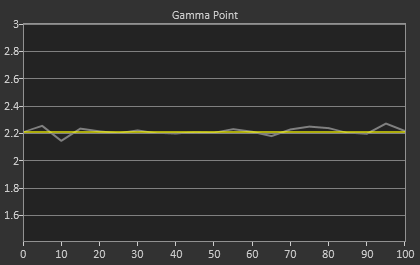
Post-calibration, our dE2000 average is now 0.56. We see every error below 2.0 except for 0, which really doesn’t matter anyway. There is no color shift, and the gamma tracks along 2.2 almost perfectly. Our contrast ratio has taken a small hit, down to 704:1 as it has to manipulate the peak white level to be more accurate. What we see now is a grayscale image that is basically flawless.
With color the PQ321Q has a pair of issues. The first issue is undersaturation in the gamut when it comes to red and blue. This also causes Magenta to be undersaturated, and brings out some high dE values for 100% saturations on those colors. We also see that green and red fall outside the sRGB gamut triangle. This too is unfortunate as it pushes yellows and oranges outside the gamut, and causes errors there. Our Cyan value is almost perfect, but every other color has some issue on the PQ321Q, at least at 100%.


The reason we don’t just stop with the gamut charts is because they only represent 6 colors out of millions. They might have a large error, but it is rare to see 100% saturated colors in real content like photos or movies. To test this we use the Colorchecker chart in CalMAN. We’ve always used the Gretag Macbeth chart, which has 24 common colors on it. SpectraCal has added a 96-sample chart to the newest version of CalMAN. This adds more skin tones and other colors, and will provide a more accurate indication of monitor performance. The color samples for it are taken from an XRite chart. I’m going to run them both for a few reviews to see how it goes, but more samples leads to better accuracy, and lets us pinpoint exactly where things are going bad.
On the PQ321Q the issues all come back to Red/Orange/Yellow shades. Skin tones are good, blues and purples and cyans are all decent, and blue-greens are nice as well. Those tones that fall outside of the triangle cause the dE2000 average to rise way, way up and show us where the issues are. Reds certainly have a good amount of pop on the ASUS, and there really isn’t a good way to bring them back in. This issue is the largest one with the ASUS PQ321Q, as that extra gamut can’t really be addressed.
Traditionally if you look at the standard gamut dE2000 chart and see a large error in red, that indicates you will have issues with skin tones and people looking sunburned, With the larger Color Checker chart, we see that this is not the case, and that skin tones are, for the most part, under control while orange and yellows are not. This extra data helps us realize where the ASUS will look correct and where it will fall short.

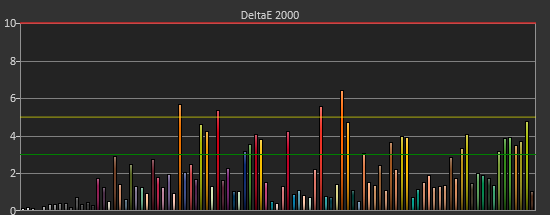
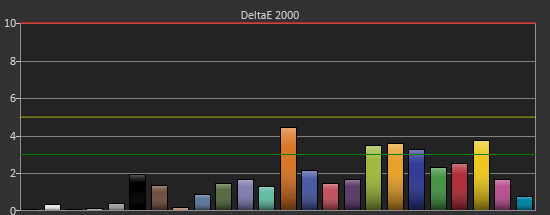
With the saturations charts, we see that the errors start small, like usual, and get larger as you move towards the edge of the gamut. Blue has the largest error, though we are less sensitive to blue than other colors. Cyan again remains great, and it would be nice if every color had the same performance as it does.
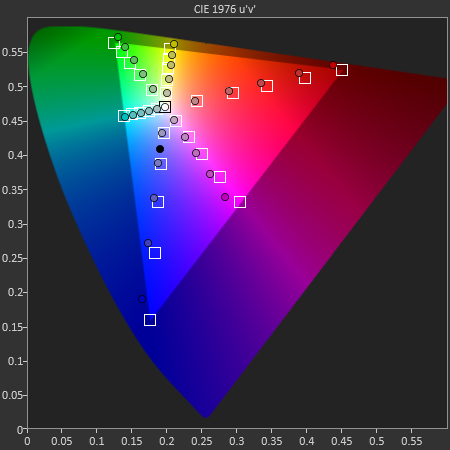
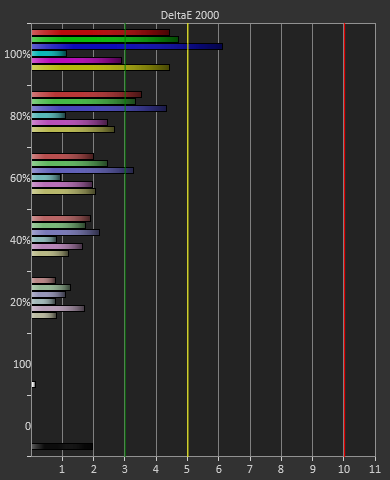
Post-calibration the ASUS is a bit of a mixed bag. We get great grayscale and gamma performance, but most people don’t just deal in black-and-white content. The color gamut provides a bit of an issue being both under-saturated and out-of-gamut at the same time. Looking through images the issue that pops out to me is the yellows. They really pop off the screen and look too bright. The color of reds looks slightly off, but yellow has the biggest issue that I can see with my eyes.


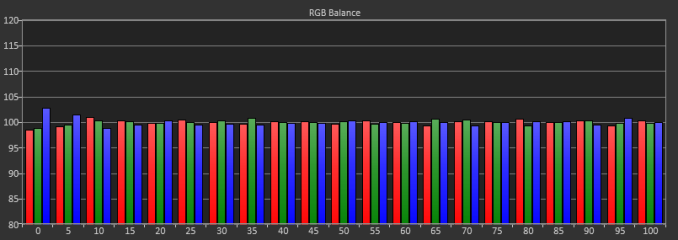
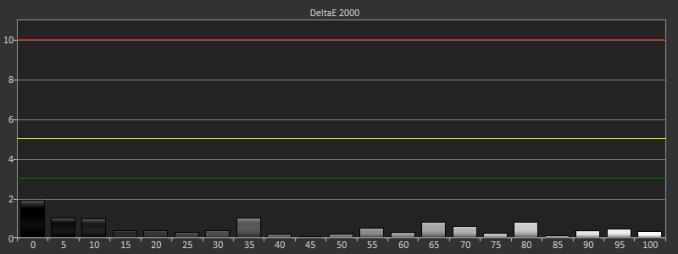











166 Comments
View All Comments
cheinonen - Tuesday, July 23, 2013 - link
I have a vintage 2010 MacBook Air myself and no access to a Haswell one, so that's beyond my reach right now unfortunately.Treckin - Tuesday, July 23, 2013 - link
Holy snaps man, edit this article! It's absolutely painful to read. Its like pulling teeth, just trying to get to the next awkwardly chosen and/or wrong word.LemmingOverlord - Tuesday, July 23, 2013 - link
when u copy&pasted the data from Excel (?) the contrast ratio messed up... I guess.vLsL2VnDmWjoTByaVLxb - Tuesday, July 23, 2013 - link
30 pounds. Wow. That's a seriously large number. I'd like to see something 5-10 pounds less before I would consider.noeldillabough - Tuesday, July 23, 2013 - link
Its for your desk; soon enough we'll have three of these type on our desk. Only thing, is 31" too large to look at without panning your head from left to right? I currently use 3 24" monitors.DanNeely - Tuesday, July 23, 2013 - link
I have no problem with my 30" monitor.airmantharp - Tuesday, July 23, 2013 - link
Me either! And mine has CCFLs, not LEDs. The LED monitors feel like Frisbees.DanNeely - Tuesday, July 23, 2013 - link
My NEC 3090 weights in at 40 pounds. A replacement that much lighter is very attractive.noeldillabough - Tuesday, July 23, 2013 - link
I'm confused: "While not truly 4K, it is a 3840x2160 LCD display that can accept an Ultra High Definition (UHD) signal over HDMI and DisplayPort"; isn't 3840x2160 4K?DanNeely - Tuesday, July 23, 2013 - link
It's the standard marketing rebranding effort. 4k cinema has been around for years at 4096x2160 for years. As much as I dislike that sort of game in general; a 2:1 scaling ratio with 1080p makes new systems play much nicer with old ones and is a reasonable tradeoff.